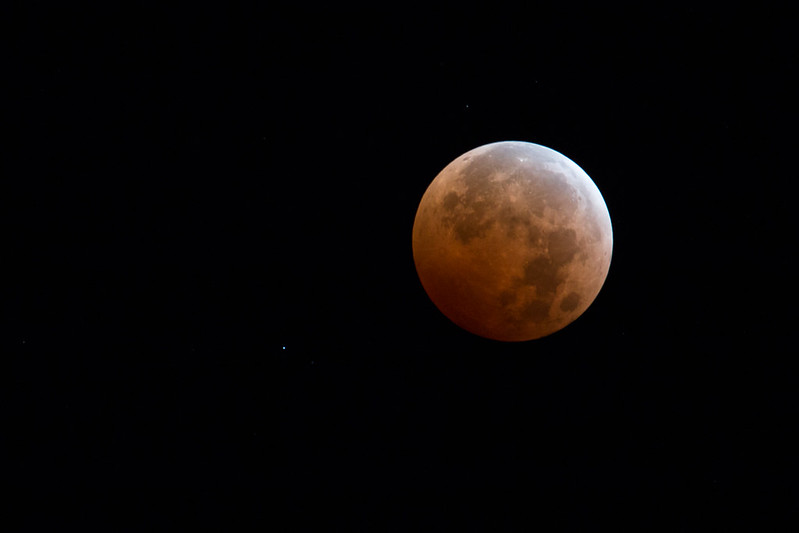Science Snippet:
Explore The Ice Giants

Jupiter and Saturn are gas giants; Uranus and Neptune are ice giants. The ice giants both have extremely thick atmospheres made of hydrogen and helium. Uranus has a small amount of methane in its atmosphere as well which gives the planet a blue-green color. Neptune has a dark blue color. Scientists aren’t sure what component in Neptune’s atmosphere is responsible for this color. The surface of Neptune’s atmosphere is much more disturbed than that of Uranus. Large storms sweep across Neptune’s atmosphere. The winds in these storms are the strongest in the solar system and can reach 1,200 miles per hour. Under the thick atmospheres of the ice giants lies a dense ocean of icy fluids. Most of this fluid is composed of water, methane, and ammonia. These cold oceans account for most of the mass of the planets. Both Uranus and Neptune probably have a solid rocky iron core beneath the icy oceans.
Right now Uranus is 1.8 billion miles away. This is its average distance from Earth. To visualize the distances to Jupiter and Saturn, we imagined that miles were inches. Using this scale it takes only 75 steps to walk across the United States. But it would take over 60 million steps to walk to Uranus if miles were inches. It would take almost 4 years to take that many steps. Uranus is closer than Neptune. Neptune is currently 2.7 billion miles away, which is about as close as it ever gets to Earth. If we imagine that miles are inches, this would represent almost 90 million steps. It would take close to six years to take that many steps. But a few years of walking is much less time than the time it would take to walk the actual distances to Uranus or Neptune. After 68,000 years of walking day and night, you would have walked the distance to the current position of Uranus. It will take an additional 34,000 years to walk as far as Neptune.
Because Uranus and Neptune are so far away, they take a long time to orbit the sun. Uranus takes 84 years to complete one of its orbits of the sun. Neptune takes 165 years! Neptune was discovered in 1846. But since that time, Neptune has only completed one full orbit around the sun. Both Uranus and Neptune spin very fast, however. Uranus takes 17 hours to complete one rotation while Neptune takes only 16 hours.
Both Uranus and Neptune have thin ring systems and many moons. Uranus has 27 moons and Neptune has 14. Uranus’s largest moon, Titania, is about two-thirds the size of our moon. Uranus has four other moons that are fairly large. These large moons are quite dense for their size. Their surfaces are covered in geologic features such as craters, canyons, and faults. Neptune’s largest moon, Triton, is slightly smaller than our moon. All of Neptune’s other moons are much smaller than Triton. In fact, Triton is Neptune’s only round moon; moons below a certain size are irregularly shaped, because their gravity isn’t strong enough to pull them into a sphere. Most large moons orbit around their planets in the same direction that the planet rotates. But Triton orbits Neptune in the opposite direction. Because of this strange feature, astronomers think Triton may be a dwarf planet captured by Neptune’s gravity—Triton is very similar to Pluto in size and composition.
Observing the Ice Giants is rather difficult. Using my telescope, I have seen Uranus once, but I have never found Neptune. They are easiest to find when they are in conjunction with another planet. Unfortunately, there won’t be any good conjunctions involving these planets until 2025. Additionally, they are both in regions of the sky without many bright stars, though Uranus is fairly close to Jupiter, and Neptune is in the same part of the sky as Saturn. But if you want to try finding them, Uranus is best seen in the very early morning while Neptune is visible for most of the night. Both ice giants are visible with binoculars although a small telescope would be a better instrument for finding them, and you will need to wait until the sky is fully dark. To locate either planet, you will want a detailed finder chart. These are available on many astronomy websites. Uranus should look like a faint blue-green star while Neptune will appear fainter but also more vividly blue.
Neptune is the most distant object in our solar system that you can see without a large telescope. We can see the stars, which are much further away than Neptune. This is because they are much larger and they make their own light. The light we see from Neptune, on the other hand, is a distant glimmer of reflected light from the sun.
